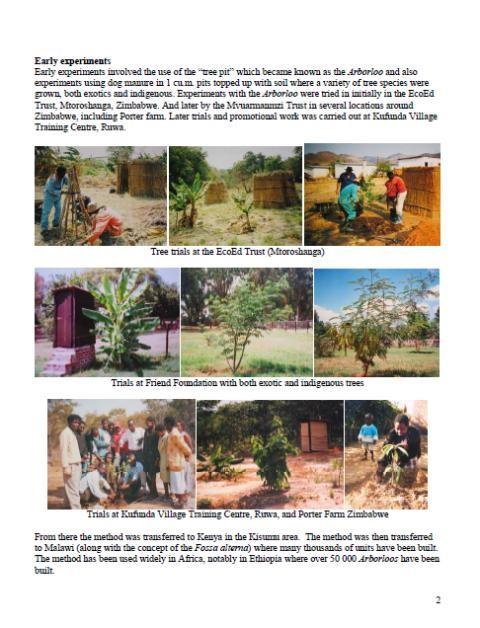
Published in: 2011
Publisher:
Aquamor, Zimbabwe and Stockholm Environment Institute, Sweden
Author:
Morgan, P.
Uploaded by:
SuSanA secretariat
Partner profile:
common upload
10009 Views
125 Downloads
Content - Summary
This report clearly indicates that trees of various types can benefit greatly from the nutrients derived from human excreta and the methods of transferring the nutrients can vary somewhat. These vary from direct uptake from an unlined pit, a lined pit, by various methods of urine application and also from the seepage from soakaways linked to septic tanks of various types. The trees, in their early stages and up to at least one year old require protection from animals like goats (if these are common in the area) and most importantly a regular supply of water. It is often best to plant the tree just after the start of the main rains, if water is scarce or if regular watering cannot be guarantees. If trees die, from what ever course, they can be replaced.
Tree fare better if they have been pre-grown in containers just after purchase form the nursery. Here they can be planted in rich soil, water regularly, and when established the growth can be accelerated by the weekly application of diluted urine.
Bibliographic information
Morgan, P. (2011). Trees as recyclers of nutrients present in human excreta - Main tree report. Aquamor, Zimbabwe and Stockholm Environment Institute, Sweden
Filter tags
English Faeces or faecal sludge Food security and productive sanitation (WG5) Practitioners Rural Sub-Saharan Africa Urine















